-
No-Code
Platform
-
Studio
No-code agentic platform delivering the fastest time-to-value and the highest ROI
-
Studio
-
AI-Native CRM
CRM
-
AI-Native CRM
New era CRM to manage customer & operational workflows
CRM Products -
AI-Native CRM
- Industries
- Customers
- Partners
- About
Top 10 OutSystems Competitors and Alternatives in 2025
Updated on
December 13, 2024
10 min read
Switch Fast. Scale Smart. Go Creatio

For companies looking to speed up software development, low-code platforms serve as essential assistants. OutSystems is widely praised as an outstanding low-code rapid development solution — but it's not the only player on the field. In some respects, many OutSystems alternatives surpass their competitor and offer more at more affordable costs.
In this roundup, we explain how to choose the best low-code/no-code platform and list 10 OutSystems alternatives that deserve the spotlight.
What is OutSystems?
OutSystems is a popular low-code solution that simplifies the development of desktop and mobile applications, offering rapid application development and increased productivity. It is popular worldwide, which guarantees a very active community to help and support.
The OutSystems platform focuses primarily on professional developers. It provides them with multiple low-code tools to accelerate application delivery, including AI-assisted development, tools for data modeling and management, a rich toolset for user experience (UX) and native mobile app development, integrations, and a community marketplace of more than 5,000 platform add-ons. It supports a broad list of coding languages, which is not common for a low-code platform.
Overall, OutSystems is a strong performer for low-code development and rapid development geared towards professional developers. Nevertheless, there might be better choices for companies looking for low-code solutions, depending on their specific requirements. Let's look at the features missing from OutSystems and see if its competitors have something better to offer.
Why Consider Alternatives to OutSystems?
First and foremost, if you're looking for a low-code platform accessible to non-technical developers, OutSystems wouldn't be the right choice. It's common for low-code solutions to provide no-code features that empower business professionals to build applications and automation through a visual interface without any programming skills. Unfortunately, the OutSystems Integrated Development Environment (IDE) is too technically complicated for non-technical developers. Analysts and reviewers alike highlight the platform's complexity for business users and the steep learning curve.
Focus on technical developers brings all the risks associated with professional development, such as the need for more workers and the misalignment between business and development. Thus, an OutSystems alternative that combines low-code and no-code tools may better fit your company.
Moreover, customer reviews criticize OutSystem's lack of support during the adoption and implementation of the platform. Many of the tutorials are presented in a high-level technical manner, making them hard to grasp.
OutSystems has a few functional weaknesses, but those found were content management and governance functionality, such as version control and Continuous Integration and Continuous Delivery (CI/CD) features.
What Should You Look for in an OutSystems Alternative?
To make your search for the perfect app development platform easier, here's a list of characteristics and features to focus on when you're researching OutSystems competitors.
- Extensive out-of-the-box features. One of the main strengths of OutSystems is its turnkey capabilities, such as tools for mobile development, UX development, user interface (UI) customization, and data modeling. If you're looking for a worthy OutSystems alternative, make sure it offers the same level of power.
- Flexibility and customization. The platform you decide to invest in needs to cater to your unique business processes, which can be ensured with customization. Make sure the low-code or no-code solution you go for allows you to develop and automate without limits.
- Features for citizen developers. The most significant gap in OutSystems functionality is the lack of citizen developer features. To mitigate this, a better alternative should present user-friendly UI and visual development features such as drag-and-drop elements that can be used as building blocks for business applications.
- Integrations. It's crucial that your development platform of choice can connect to all the other services you are already using, such as email providers or CRM software. Research the connectors and integration the platform offers to ensure it fits into your existing IT ecosystem.
- Governance. OutSystems' governance tools leave much to be desired, lacking version control and CI/CD. A better platform should have easy-to-grasp and powerful governance functionality.
- Transparent pricing. The pricing of low-code solutions often can be too complex, bundling add-ons and tools that require additional payments. Look for a vendor that offers transparent pricing where you can select the functionality you want to pay for.
- Deployment options. Consider the deployment choices offered, whether cloud-based or on-premises, ensuring it’s aligned with your organization's data security priorities.
- AI-assisted development. No-code and low-code solutions aim to accelerate delivery and help from generative AI dramatically contributes to that. Prioritize AI features in your search to ensure the productivity of low-code development.
Top 10 OutSystems Alternatives to Choose in 2025
In this roundup, we focus on showcasing alternatives to OutSystems, ranging from low-code to no-code platforms, catering to various levels of accessibility for non-programmers. We begin the list with a no-code solution that eliminates the need for programming expertise.
1. Creatio
Creatio stands out as the best OutSystems alternative for businesses seeking out no-code platftorm. It enables users to effortlessly create applications, design workflows, and even fashion entire products without delving into complex coding procedures.
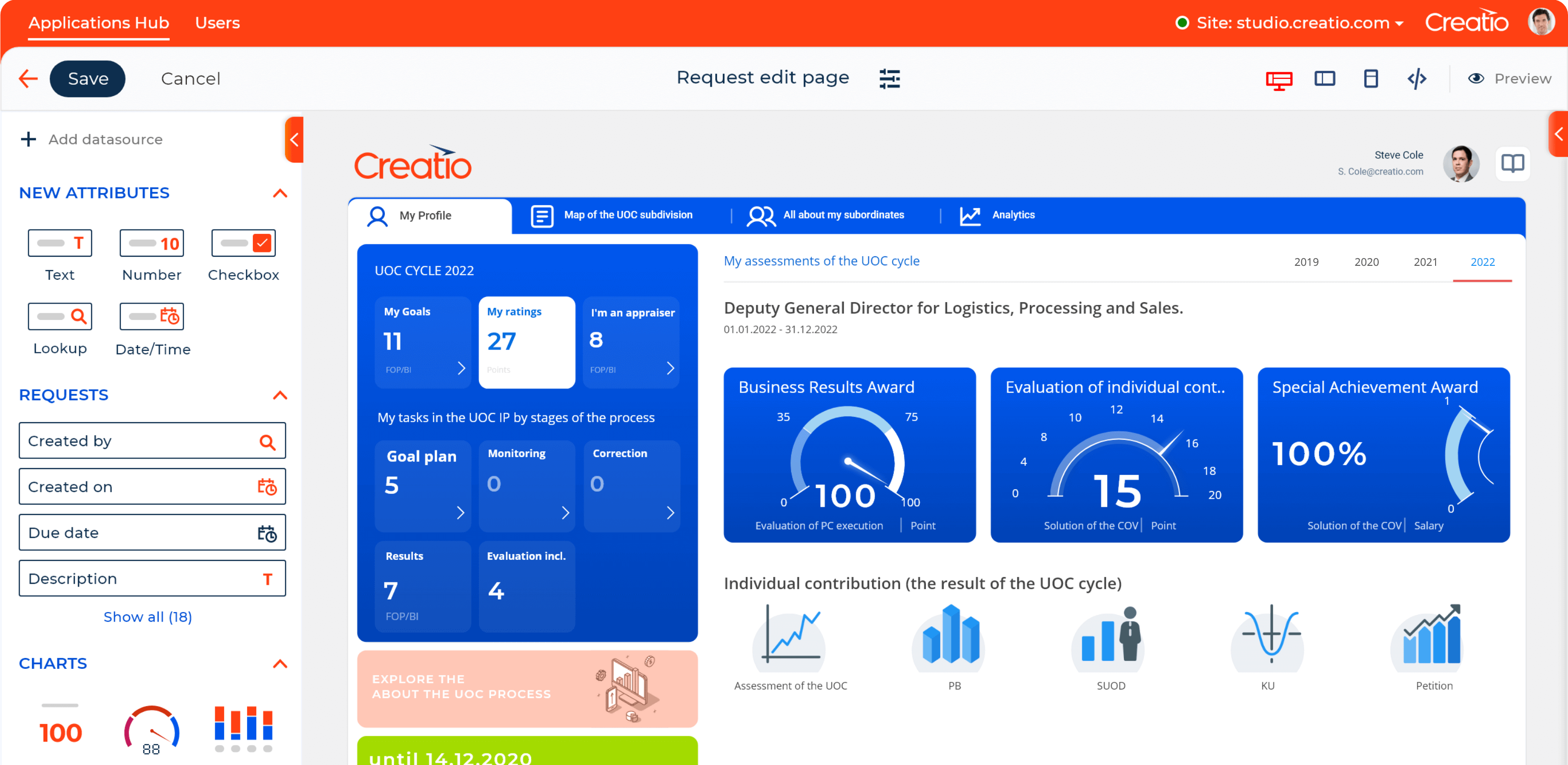
In the most recent The Forrester Wave™: Low-Code Development Platforms For Professional Developers report, Creatio was named a sole Leader, highlighting it as the best option for enterprises that want well-governed citizen development and superior automation at scale.
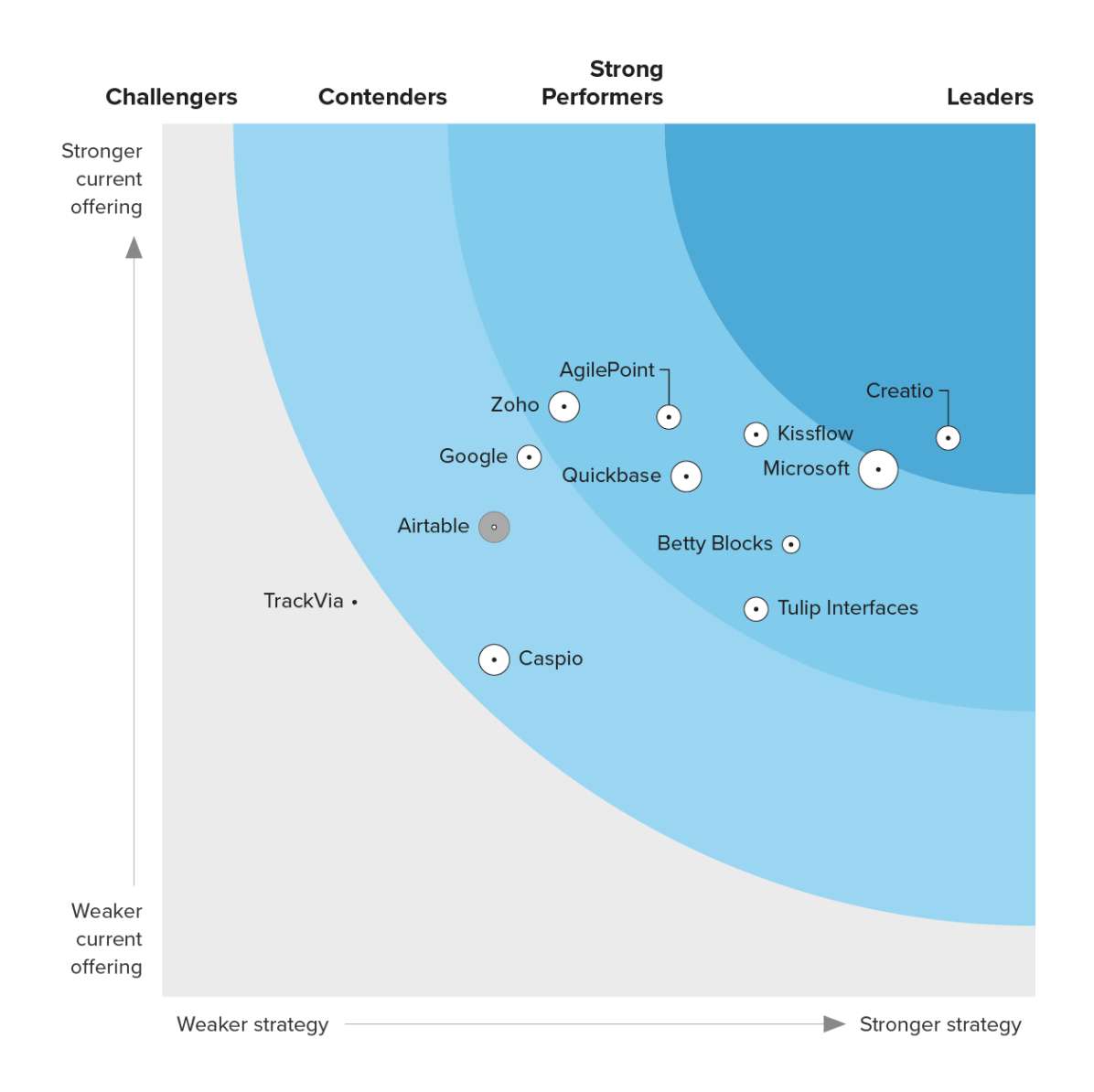
The platform boasts a powerful workflow automation engine tailored for non-technical users. Its intuitive no-code tools facilitate the creation and modification of structured BPMN-based (Business Process Model and Notation) processes and semi-structured processes, known as cases, of varying complexities with minimal coding requirements. In addition to that, it offers robust AI assistance for no-code development.
Creatio also acknowledges the importance of coding, providing professional developers with the flexibility to integrate coding as needed. However, it remains an optional feature rather than a prerequisite for application development.
The Creatio Marketplace hosts an extensive array of over 700 applications and connectors, enriching the capabilities of your no-code development platform and integrating it into your business tool set.
One of Creatio's distinguishing factors is its transparent pricing model, which clearly outlines anticipated rates without hidden fees. With an entry point starting at just $25 per user per month for Creatio Studio, it proves to be a cost-effective option for businesses of all sizes.
Build powerful applications with the world’s leading low-code platform Creatio

2. Salesforce Lightning
Salesforce Lightning is a platform renowned for its low-code development capabilities, and attracting customers who prioritize CRM functionalities. Salesforce targets a diverse user base, though it leans slightly towards IT professionals, benefiting from a robust community of Salesforce developers.
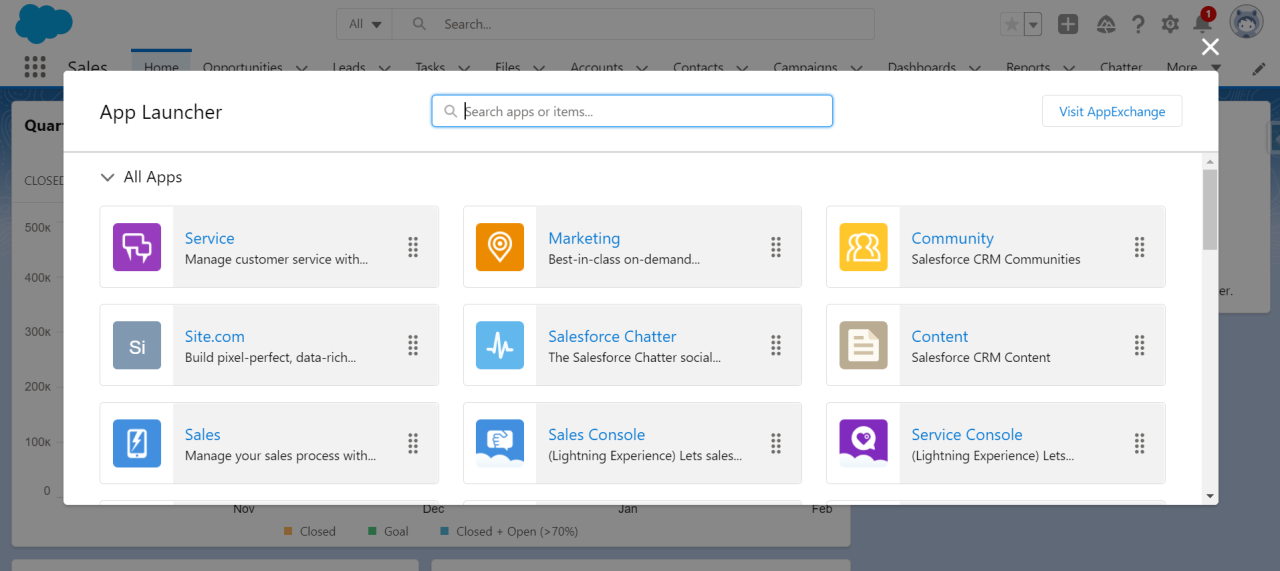
The platform's low-code capabilities are expansive, serving a multitude of industries and integration requirements, with a particular emphasis on midsize to large enterprises.
Nevertheless, navigating the Salesforce Platform can pose challenges. Users often find it intricate, requiring significant coding proficiency to utilize its various configuration frameworks tailored for distinct use cases.
In terms of pricing, Salesforce Lightning offers tiered plans starting at $25 per user per month, featuring limited capabilities, and scaling up to $500 for the most comprehensive solution tailored for large enterprises. This pricing structure caters to businesses with substantial budgets.
Businesses, especially those with existing investments in Salesforce products, should primarily consider Salesforce Lightning for development within their established ecosystem, leveraging its CRM prowess and robust low-code capabilities.
See also: Salesforce Alternatives & Competitors and Salesforce Marketing Cloud Alternatives & Competitors
3. Appian
Appian stands out as a premier low-code platform for application development, emphasizing dynamic case management and business process automation. It fosters collaboration between professional and citizen developers through integrated design studios, offering workflows, approvals, and change management tailored to different developer personas.
Renowned in the low-code industry, Appian boasts a robust automation platform with drag-and-drop elements, support for business process modeling, and flexible deployment options. Its modern user experience, coupled with advanced data modeling and document management capabilities, positions it as a formidable solution primarily targeted at professional developers.
While Appian aims to accelerate the development process, it does not entirely replace the need for manual coding, posing a challenge for citizen developers.
One notable drawback is the lack of transparent pricing, as Appian's platform pricing is available only upon request. This fact may be a downside for users seeking affordable low-code solutions.
See also: Top 9 Appian Competitors & Alternatives
4. Pegasystems
Pega stands as an advanced platform known for its excellence in UX design, application logic, workflow, and security, offering versatile deployment options as Software as a Service (SaaS) or on-premises solutions.
Pega's platform operates as a composable solution, providing low-code building blocks that empower business analysts, citizen developers, and front-end developers to construct applications using prebuilt templates. Pega includes native tools for low-code application development, workflow orchestration, case management, and AI-powered decision modeling. However, implementing Pega Infinity may necessitate additional IT support due to its complex integration and software configuration.
Moreover, Pega's licensing costs can pose a barrier, particularly for smaller organizations, with pricing starting at $90 per user per month for a Standard Edition. Customers have reported unpredictable pricing models and additional budget requirements for professional services.
See also: Top 10 Pega Alternatives and Competitors
5. Microsoft Power Apps Platform
Microsoft Power Apps is a solution designed to facilitate enterprise-grade application development through low-code tools. The Power Platform encompasses a robust set of features geared towards enhancing and simplifying the app development journey. Notable features include strong data integration capabilities, user-friendly development tools, and seamless integration with various Microsoft services. Power Apps, a core element of the Power Platform, is particularly well-suited for citizen developers, although professional developers can also leverage code-first tools to extend its capabilities.
However, Microsoft is not without its drawbacks, as users have highlighted concerns regarding the non-transparent and bundled pricing model of the platform. The pricing for the core platform begins at $20 per user/month, though additional costs may apply depending on usage and requirements. Additionally, licensing costs may increase with the scale and complexity of workflows and applications developed using Power Apps.
Furthermore, customers have noted the complexity of Microsoft's overall platform, finding it challenging to navigate the various apps and tools inside it and their associated costs. This model may compel businesses to pay for tools that may not align with their needs.
6. ServiceNow
ServiceNow, initially rooted in service management, has evolved to include business process automation and low-code development.
It offers out-of-the-box features for low-code development and robust app management. The platform's integration capabilities are notable, boasting over 600 connectors for building and expanding IT ecosystems.
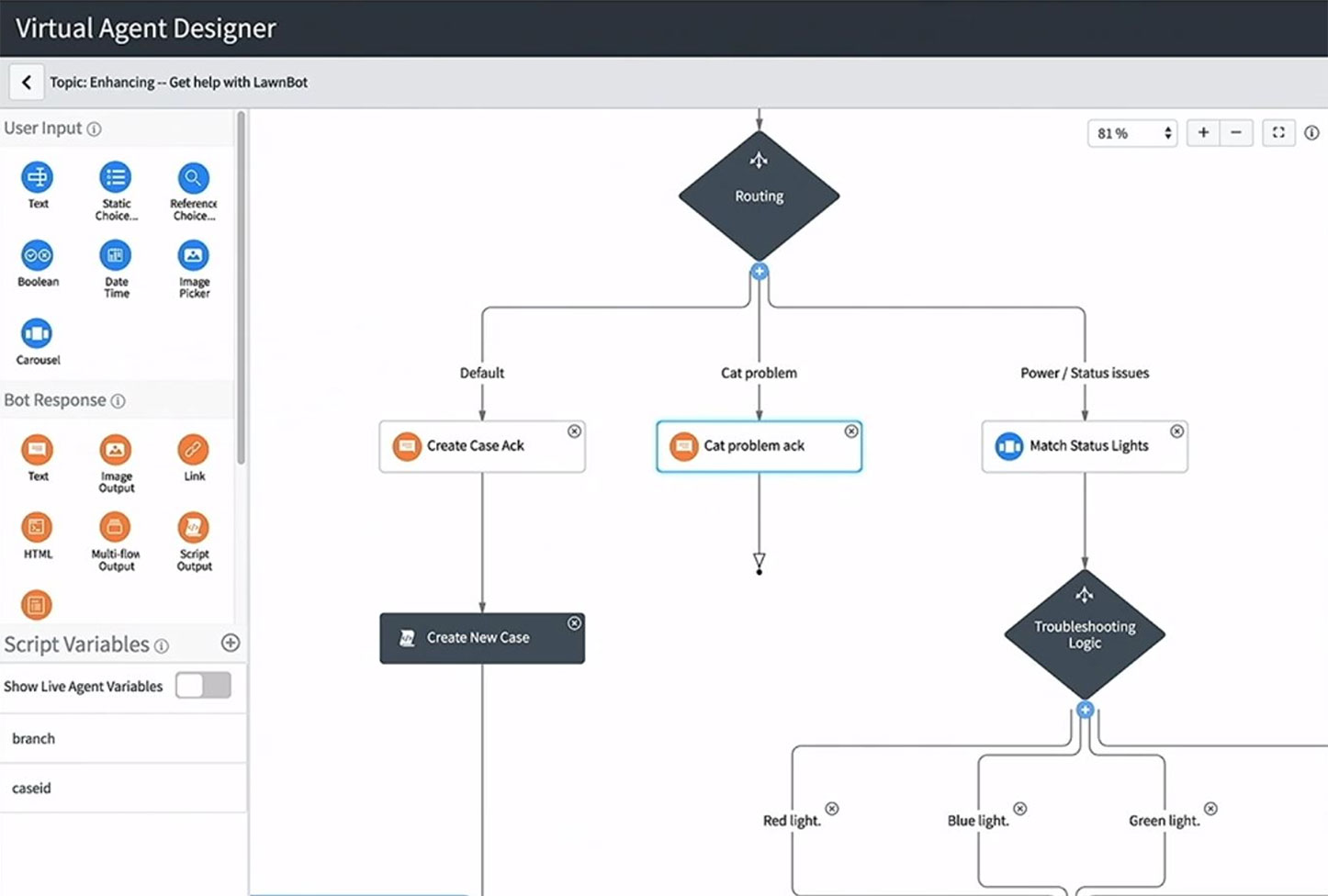
Key components of the platform include Flow Designer for workflow automation and Process Automation Designer for process modeling. Its GenAI functionality enhances user efficiency by suggesting content and generating code from textual input.
However, some user reviews suggest limitations in handling complex business processes, as the platform focuses primarily on simple workflow scenarios. Other challenges include complexities in pricing models requiring custom quotes, and limitations in UI design flexibility.
ServiceNow's pricing structure is criticized for its lack of transparency. Customers struggle to find costs on the website and frequently encounter hidden fees, even with top-tier plans.
7. Nintex
Nintex offers robust intelligent process automation, serving as an excellent alternative for businesses focusing on citizen developers. With reliable low-code tools, it streamlines workflows and ensures governance seamlessly, catering to user-friendly needs.
Nintex provides efficient workflow automation with features like document creation, process mapping, and task management via intuitive drag-and-drop tools.
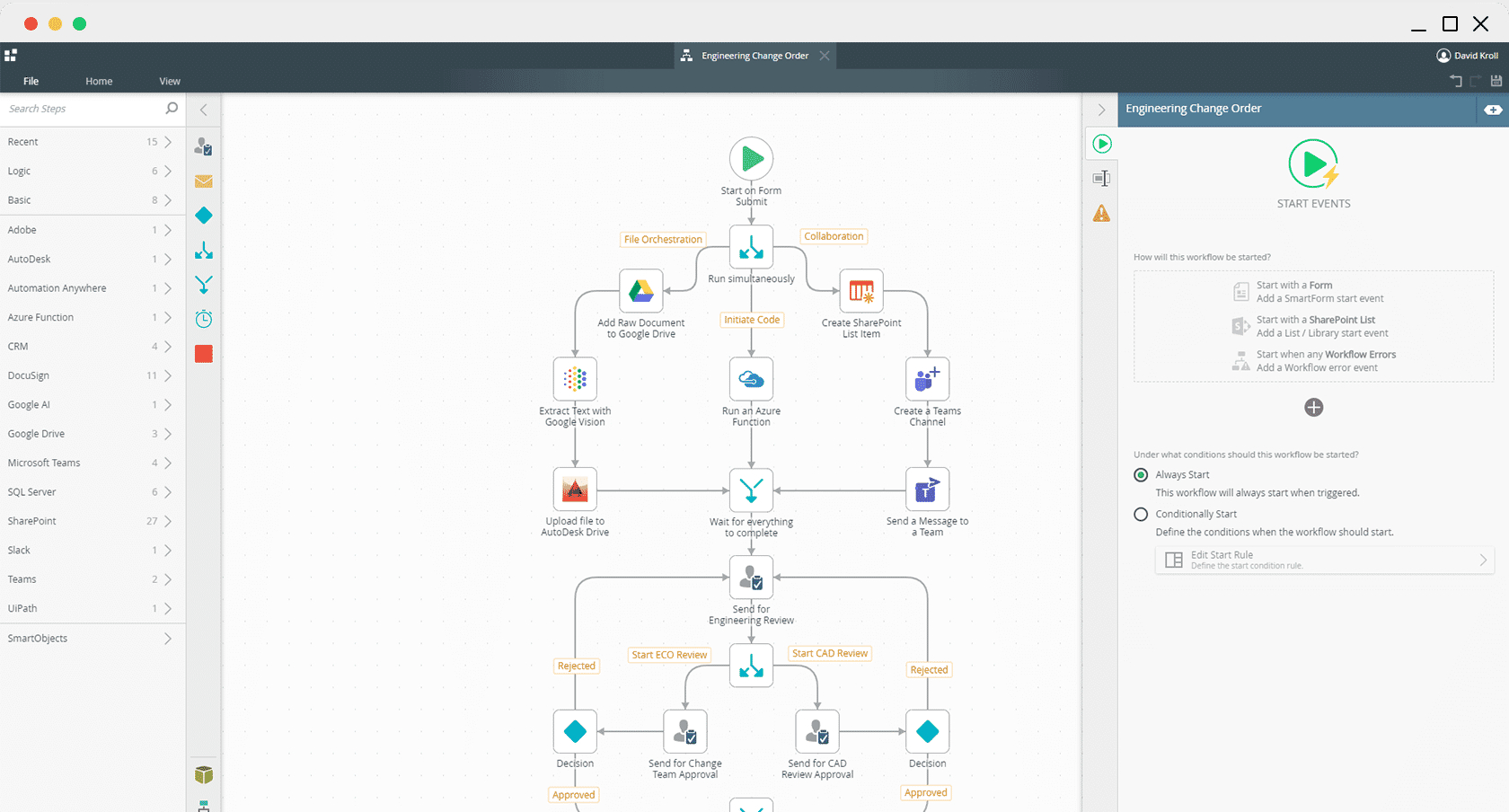
Nintex facilitates seamless integration with third-party business applications through connectors, fostering collaboration across HR, IT, and customer relationship management solutions.
Pricing for the Nintex platform begins at $25,000 per year for unlimited users and workflows.
8. Oracle Application Express
Oracle Application Express (APEX) is a standout low-code application development platform known for creating scalable and secure business applications. It targets both professional and citizen developers, offering practical tools for efficient application management, pre-packed monitoring reports, and solid governance and access controls.
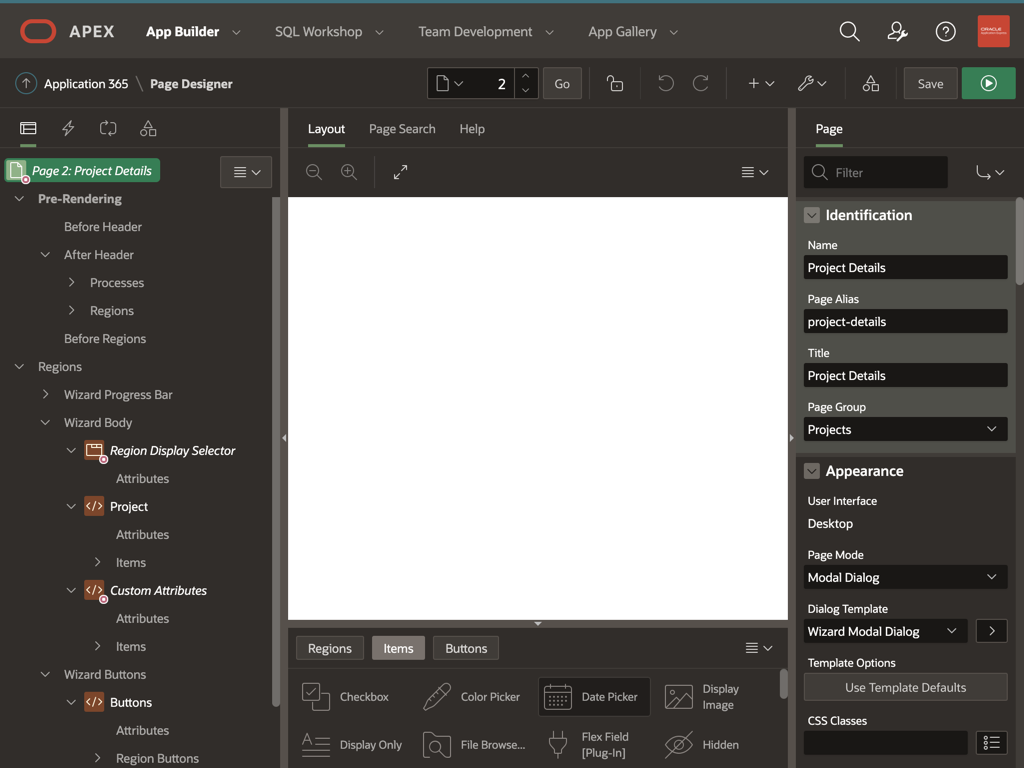
However, its heavy reliance on SQL (Structured Query Language) poses challenges in UI development, version control, and mobile features, limiting support primarily to the Oracle database.
APEX offers a straightforward pricing model based on compute and storage consumption, starting at $122 per month, with a free version available for creating one application.
APEX serves as a viable option for organizations with SQL developers prioritizing a simple and scalable commercial model, making it an attractive choice for streamlined application development and management.
9. Kintone
Kintone is a versatile no-code digital workplace platform aimed at streamlining organizational processes, particularly for SMBs. It provides a unified central hub for managing data, tasks, and communication efficiently.
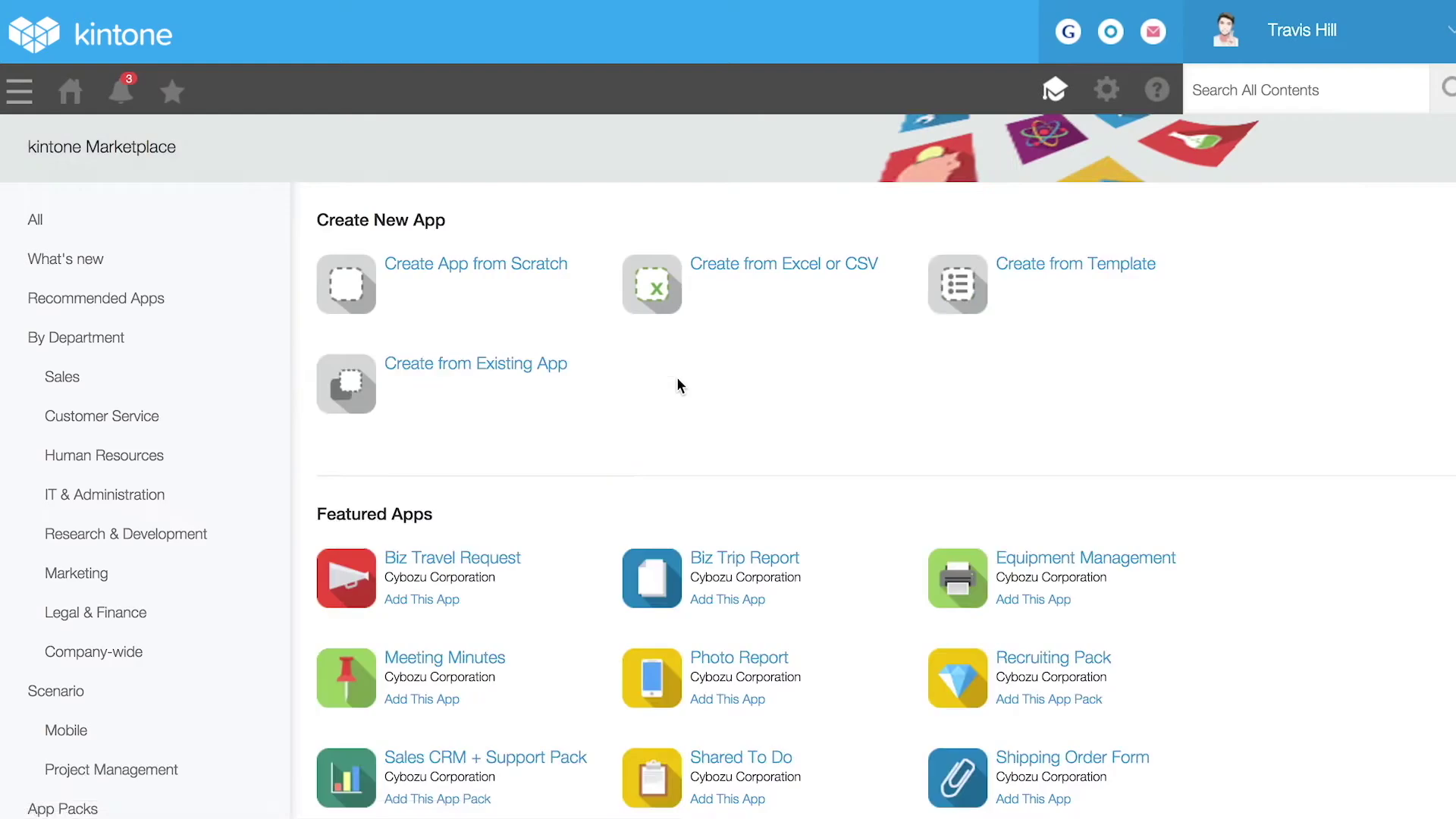
With pre-built apps and templates, Kintone facilitates rapid no-code development and workflow automation. While it offers extensions and connectors, its library is relatively limited compared to other no-code vendors.
Emphasizing user-friendly, no-code solutions, Kintone serves as a comprehensive and accessible platform for enhancing collaboration and efficiency across various organizational scales.
With pricing set at $24 per user per month, Kintone offers an affordable solution for businesses of all sizes to leverage its powerful features and streamline their workflows.
10. Mendix
Mendix stands as a leading low-code platform tailored for building and deploying enterprise-grade applications swiftly. With a suite of visual modeling tools, Mendix fosters seamless collaboration across diverse teams, accommodating both professional developers and knowledge workers without an IT background.
The platform offers Mendix Studio Pro, a visual, model-driven IDE equipped with customizable themes, drag-and-drop functionality, and reusable app components. It prioritizes the acceleration of the application development lifecycle, from ideation and development to deployment and operations.
Mendix caters to fusion teams, facilitating process automation through Mendix Workflow. This integrated capability enables business users to develop process-based enterprise apps using intuitive drag-and-drop elements. Moreover, Mendix provides a dedicated design system for creating reusable UI assets.
Pricing starts at $52.50 per month for basic capabilities, suitable for smaller businesses, but larger enterprises may find a starting price of $2,100 per month. Some clients perceive Mendix's pricing model as inflexible, lacking accommodation for a broader spectrum of client sizes and use cases.
See also: Top 10 Mendix Competitors & Alternatives
In Conclusion
Selecting the best alternative solution to OutSystems is not difficult when you know what features to prioritize. Determine your requirements and choose the software that best aligns with them. If you're looking for a platform that gives powerful development tools to citizen developers, try Creatio's free trial and build your first application.





















































